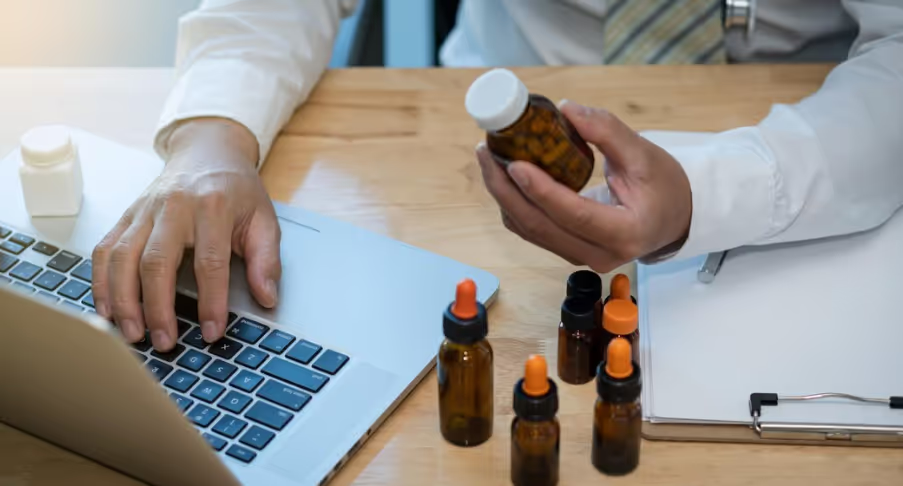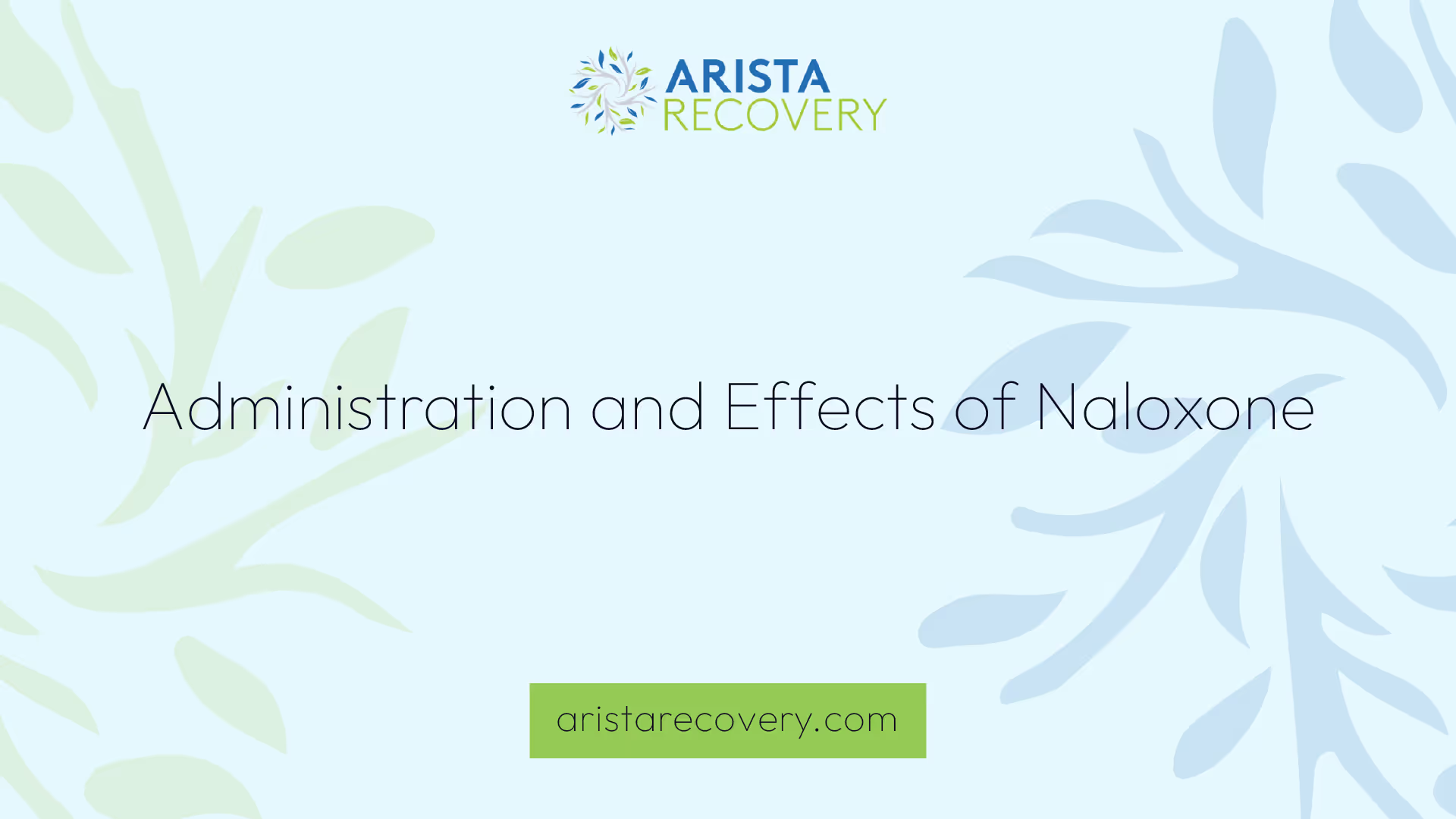What is the New Opioid Reversal Medication


Understanding Opioid Reversal Medications
Opioid reversal medications play a crucial role in combating opioid overdose, a growing concern in many communities. These medications are designed to quickly counteract the life-threatening effects of opioid overdose.
Role of Naloxone
Naloxone is a medication approved by the Food and Drug Administration (FDA) that rapidly reverses opioid overdose. It functions as an opioid antagonist, meaning it attaches to opioid receptors and blocks the effects of opioids such as heroin, morphine, and oxycodone. By doing so, naloxone can quickly restore normal breathing in individuals whose breathing has slowed or stopped due to an opioid overdose.
Administering naloxone during an opioid overdose is a temporary intervention. It is essential to seek immediate medical attention even after naloxone is administered, as its effects do not last very long.
Types of FDA-Approved Forms
Naloxone is available in two FDA-approved forms: injectable and prepackaged nasal spray. Both forms are effective in delivering the necessary dose to reverse an opioid overdose.
The nasal spray form of naloxone has gained popularity due to its ease of use. In March 2023, the FDA approved naloxone nasal spray as the first over-the-counter opioid overdose reversal medication (OORM), making it accessible in many pharmacies, community-based distribution programs, local public health organizations, and local health departments free of charge [2].
Understanding the role of naloxone and the types of FDA-approved forms available is essential for individuals and families seeking addiction treatment. For more information on opioid overdose reversal medications and what drug is an opioid antidote, visit our related articles.

Administration and Effects of Naloxone
Rapid Reversal of Opioid Overdose
Naloxone is a medication approved by the Food and Drug Administration (FDA) specifically designed to rapidly reverse opioid overdoses. It is classified as an opioid antagonist, which means it binds to opioid receptors and blocks the effects of opioids such as heroin, morphine, and oxycodone. When administered to an individual experiencing an overdose, naloxone quickly restores normal breathing if it has slowed or stopped due to the overdose.
The effectiveness of naloxone in reversing opioid overdose is well-documented. The medication can be administered via injection or as a nasal spray. Here is a brief overview of the administration methods:
Potential Withdrawal Symptoms
While naloxone is highly effective in reversing the life-threatening effects of an opioid overdose, it can also precipitate acute withdrawal symptoms in individuals who are physically dependent on opioids. These symptoms can be distressing but are generally not life-threatening. They can include:
- Nausea and vomiting
- Sweating
- Shaking or shivering
- Increased heart rate
- Increased blood pressure
- Irritability and agitation
It's important to note that naloxone will not reverse overdoses from non-opioid drugs such as cocaine or methamphetamine [1]. The medication is specifically targeted towards opioids and works by immediately blocking the opioid receptors in the brain, thereby reversing the overdose effects.
For those seeking more detailed information regarding opioid overdose reversal medications, you can visit our page on opioid overdose reversal medications. Additionally, to understand more about the specific drugs used as opioid antidotes, check out our article on what drug is an opioid antidote?.
By understanding the administration and effects of naloxone, individuals and families can better prepare for emergency situations involving opioid overdoses and ensure that they are equipped with the knowledge and tools necessary for effective intervention.

Importance of Naloxone Co-Prescription
Reducing Opioid-Related Risks
Co-prescribing naloxone, a crucial opioid reversal medication, alongside prescription opioids can significantly reduce the risk of opioid-related emergency room visits and prescription opioid-involved overdose deaths. Research from the National Institute on Drug Abuse highlights that clinicians who prescribe naloxone with opioids help mitigate the dangers associated with opioid use. Naloxone quickly reverses opioid overdoses by binding to opioid receptors and blocking the effects of opioid drugs.
CDC Recommendations
The U.S. Centers for Disease Control and Prevention (CDC) strongly recommends the co-prescription of naloxone for patients who are at high risk of opioid overdose. According to the CDC, individuals who are prescribed high doses of opioids, have a history of substance use disorder, or are concurrently using benzodiazepines are particularly advised to have naloxone on hand.
By following these guidelines, healthcare providers can play a pivotal role in preventing opioid overdose deaths and improving patient safety. For more detailed information on opioid antidotes, visit our article on what drug is an opioid antidote?. To further understand the mechanisms and benefits of opioid reversal, check out what is the reversal of opiate activity?.
Ensuring the availability and accessibility of naloxone is critical for harm reduction and overdose prevention. For broader insights into opioid overdose reversal medications, explore our comprehensive guide on opioid overdose reversal medications.
Accessibility and OTC Approval
Narcan Nasal Spray Approval
Narcan, a 4 mg naloxone hydrochloride nasal spray, has gained significant attention as it became the first naloxone product approved for over-the-counter (OTC), nonprescription use. This landmark approval by the U.S. Food and Drug Administration (FDA) aims to increase the availability of life-saving opioid overdose reversal medications to the public. The FDA granted the OTC approval to Emergent BioSolutions, making it easier for individuals and families to access this critical treatment without the need for a prescription.
The timeline for when this OTC product will be available and its price is determined by the manufacturer. The FDA is working closely with stakeholders to ensure the continued availability of naloxone nasal spray products during the transition from prescription to OTC status, which may take several months.
Facilitating Access to Naloxone
The FDA has implemented various measures to make naloxone more accessible. This includes encouraging manufacturers to submit applications for OTC naloxone products. In 2019, the FDA designed, tested, and validated a model naloxone Drug Facts Label (DFL) featuring easy-to-understand pictograms on how to use the drug. This initiative was aimed at simplifying the approval process for OTC naloxone products.
By facilitating access to naloxone, the FDA hopes to reduce opioid-related fatalities. The availability of OTC naloxone products like Narcan nasal spray can play a crucial role in emergency situations, providing immediate assistance to individuals experiencing an opioid overdose. Understanding what drug is an opioid antidote and how to administer it can save lives.
The FDA's efforts to make naloxone more accessible align with broader public health goals to mitigate the opioid crisis. This includes promoting harm reduction strategies and ensuring that life-saving medications like Narcan are readily available to those in need. For more information on opioid overdose reversal medications, visit our guide on opioid overdose reversal medications.
Nalmefene as an Opioid Reversal Medication
Exploring the landscape of opioid reversal medications, nalmefene emerges as a significant player alongside naloxone. This section delves into the comparison between nalmefene and naloxone, as well as the prescription requirements and usage of nalmefene.
Comparison to Naloxone
Nalmefene is an FDA-approved opioid overdose reversal medication (OORM) available as a nasal spray by prescription only. It is used to treat acute opioid overdose and is intended for use in healthcare and community settings for individuals aged 12 and over.
When comparing nalmefene to naloxone, several key differences arise:
Nalmefene's higher half-life allows it to stay active in the body longer, which can be beneficial in cases where opioid effects are prolonged. However, this extended activity can also lead to more severe and longer-lasting withdrawal symptoms compared to naloxone.
Prescription Requirements and Usage
Nalmefene is available by prescription only and is intended for use in individuals aged 12 years and older. It is primarily used in healthcare and community settings to treat acute opioid overdoses. The prescription-only status ensures that nalmefene is administered under appropriate medical supervision, which is crucial given its potential for inducing severe withdrawal symptoms.
Understanding the prescription requirements and the specific use cases for nalmefene can help families and individuals seeking addiction treatment in Kansas make informed decisions. For further details on opioid reversal medications, visit our article on opioid overdose reversal medications.
For additional information on opioid antidotes, check out our resource on what drug is an opioid antidote?. For insights into the reversal of opiate activity, see our article on what is the reversal of opiate activity?.
Overdose Prevention Toolkit Updates
The Substance Abuse and Mental Health Services Administration (SAMHSA) has made significant updates to the Overdose Prevention and Response Toolkit in 2024. This toolkit is a vital resource for individuals, families, first responders, and healthcare providers in Kansas and across the nation. Two key areas of emphasis in the updated toolkit are harm reduction and access to treatment strategies.
Harm Reduction Emphasis
Harm reduction is a crucial component of the updated toolkit. SAMHSA collaborates with federal partners, states, first responders, and stakeholders to educate on the use of naloxone and increase access to this opioid reversal medication. By focusing on harm reduction, the toolkit aims to:
- Reduce the number of opioid overdoses through widespread distribution of naloxone.
- Provide education on the importance of having naloxone readily available.
- Promote safe usage practices to minimize the risks associated with opioid use.
For more information on opioid overdose reversal medications, visit our article on opioid overdose reversal medications.
Access to Treatment Strategies
Access to treatment is another essential aspect highlighted in the toolkit. Ensuring that individuals struggling with opioid addiction have access to effective treatment options is critical for overdose prevention. The toolkit provides guidance on:
- Connecting individuals to treatment options such as medication-assisted treatment (MAT) and counseling.
- Expanding access to naloxone through pharmacies and other distribution points.
- Educating communities about the importance of treatment and recovery support.
SAMHSA's updated toolkit emphasizes that both harm reduction and access to treatment are integral to preventing opioid overdoses [2]. For additional details on opioid antidotes, check out our article on what drug is an opioid antidote?.
By incorporating these strategies, the Overdose Prevention and Response Toolkit serves as a comprehensive guide to help individuals, families, and communities combat the opioid crisis effectively. For more on the reversal of opiate activity, visit what is the reversal of opiate activity?.
References
[1]: https://nida.nih.gov/publications/drugfacts/naloxone
[2]: https://www.samhsa.gov/medications-substance-use-disorders/medications-counseling-related-conditions/opioid-overdose-reversal-medications
[3]: https://www.fda.gov/news-events/press-announcements/fda-approves-first-over-counter-naloxone-nasal-spray
You’re not alone in this.
When mental health challenges and addiction intersect, it can feel isolating. At Arista, we offer compassionate, evidence-based, and trauma-informed care to help you heal, grow, and move forward.
You’re not alone in this.
When mental health challenges and addiction intersect, it can feel isolating. At Arista, we offer compassionate, evidence-based, and trauma-informed care to help you heal, grow, and move forward.
Support that moves with you.
You’ve taken a brave first step. At Arista Recovery, we’re here to help you continue with best-in-class care designed for long-term healing and support.
.webp)






